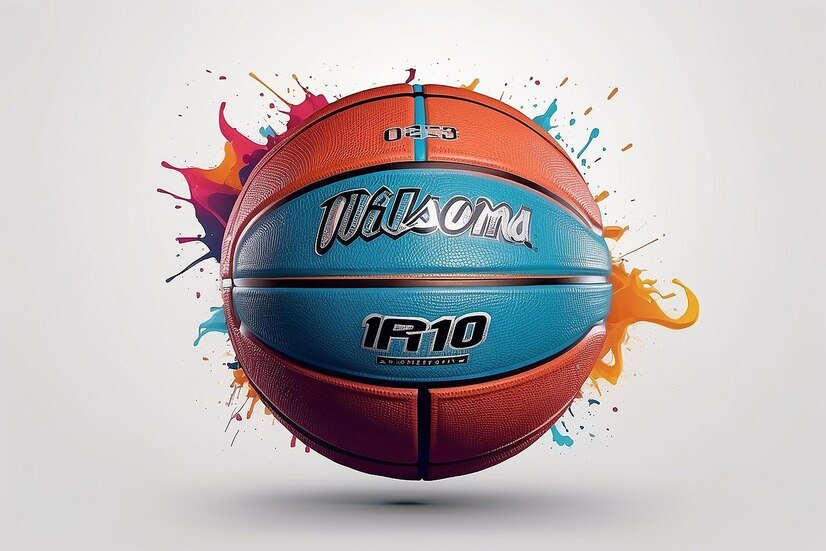Introduction to the importance of logos in sports
Logos are the visual heartbeat of any sports team. In the NBA, they serve as a powerful symbol that encapsulates not just the team’s identity but also its history and culture. When fans see an Nba team logos, emotions stir—pride, nostalgia, excitement. But have you ever stopped to think about why certain colors resonate more than others? The significance of colors in these logos goes far beyond aesthetics; it taps into psychology, cultural meanings, and even market research.
Every shade chosen tells a story. It influences how fans perceive their teams and can even impact loyalty levels. As we delve deeper into the vibrant world of NBA team logos, we’ll explore how color choices shape identities—not just for teams but for entire communities of passionate supporters. Get ready to uncover the hidden meanings behind those iconic hues!
The psychology of colors and its impact on human emotions
Colors play a vital role in how we perceive the world around us. They evoke emotions, influence behavior, and even shape our decisions. The psychology of colors is not merely an artistic concept; it’s deeply rooted in human experience.
For instance, red often symbolizes passion or urgency. It can elevate heart rates and create excitement. In contrast, blue tends to bring about calmness and trustworthiness—a reason many corporate logos incorporate it.
Yellow radiates warmth and happiness but can also induce anxiety if overused. Green is associated with nature, growth, and renewal—hence its popularity among teams that want to emphasize rebirth or vitality.
Understanding these associations helps brands connect with their audience on a deeper level. In sports branding like NBA team logos, color choices are strategic tools that tap into fans’ emotions and forge connections that go beyond mere allegiance to a team.
The use of colors in NBA team logos
Colors in NBA team logos are more than just aesthetic choices; they embody the spirit of the franchise. Each hue carries a story, conveying emotions and values that resonate with fans.
Take the vibrant red of the Chicago Bulls, for example. It signifies power and passion, which mirrors their historic competitive drive. Meanwhile, the calm blue of teams like the Dallas Mavericks evokes trust and loyalty.
The choice of colors is strategic, aiming to create an immediate connection with supporters. Bright yellows can evoke energy and enthusiasm—think about the Los Angeles Lakers’ iconic gold.
Additionally, color combinations play a crucial role in brand identity. They help differentiate teams while fostering recognition among fans across different platforms.
These colors become symbols over time, creating lasting impressions that transcend generations. The visual impact is undeniable; it’s often what draws people into a team’s culture before they even step foot in an arena.
Popular color combinations used in NBA logos
When it comes to NBA team logos, color combinations play a pivotal role in brand identity. Some teams favor bold contrasts, like the iconic red and black of the Chicago Bulls. This combination exudes intensity and power.
On the other hand, you have teams like the Miami Heat, showcasing vibrant colors such as orange and yellow alongside deep black. This mix radiates energy and excitement.
Another striking example is the Los Angeles Lakers with their royal purple and gold. These colors not only symbolize luxury but also stand out on any court.
The Boston Celtics lean into tradition with green paired with white. It reflects heritage while maintaining a fresh feel.
These choices aren’t arbitrary; they reflect each team’s personality and what they want to convey to fans worldwide. Each logo tells its own story through strategic color use that resonates deeply within basketball culture.
The hidden meanings behind each color in NBA logos
Red often symbolizes passion and energy. It’s no surprise that teams like the Chicago Bulls use this hue to evoke excitement among their fans.
Blue, on the other hand, conveys trust and loyalty. The Dallas Mavericks showcase blue prominently in their logo, reinforcing a steadfast bond with their supporters.
Yellow represents optimism and cheerfulness. The Los Angeles Lakers incorporate yellow to embody the vibrant spirit of Hollywood while energizing their fan base during game days.
Green can signify growth or ambition. Teams such as the Boston Celtics leverage green not just for luck but also to connect with rich cultural roots tied to Celtic heritage.
Black portrays authority and sophistication. The Brooklyn Nets embrace black in their branding, projecting an edgy urban vibe that resonates with diverse communities.
Every color tells a story within its logo, inviting fans into deeper connections through visual identity alone.
How colors can affect fan loyalty and brand recognition
Colors play a crucial role in shaping fan loyalty and brand recognition in the NBA. When fans see their team’s colors, it ignites a sense of belonging. This emotional connection fosters community among supporters.
Think about how often you spot those vibrant hues at games or on social media. The consistent use of specific colors helps solidify team identity. Fans are more likely to wear gear that showcases these colors, which further reinforces their allegiance.
Different shades convey unique messages and attitudes as well. For instance, bold reds might signify energy and excitement, while calming blues could evoke trust and stability.
As teams introduce new merchandise or campaigns, maintaining color consistency is vital for brand recall. Familiarity with team colors can influence purchasing decisions too—fans want to represent their squad proudly through every jersey or hat they don.
Iconic NBA logos and their effective use of colors
NBA logos are often celebrated for their iconic designs that resonate with fans. Take the Chicago Bulls, for example. The fierce red and black color scheme evokes power and intensity, perfectly mirroring the team’s competitive spirit.
The Los Angeles Lakers use purple and gold to convey luxury and excellence. These colors not only stand out but also connect deeply with the franchise’s storied history of success.
Then there’s the Miami Heat, whose bold combination of black, red, and white captures a vibrant energy reflective of South Beach culture. It speaks to both style and strength.
Each logo tells a story through its colors. They create an emotional bond between teams and their supporters while enhancing brand recognition in a crowded sports landscape. These effective choices make NBA logos memorable symbols that fans proudly wear everywhere they go.
Evolution of NBA team logos and color choices over the years
The evolution of NBA team logos reflects the changing landscape of basketball culture and design trends. Initially, many logos were simplistic, often focusing on a basic representation of the team’s name or mascot. Over time, teams began to explore bolder designs that captured the dynamism of the sport.
As franchises grew in popularity, so did their visual identities. The use of vibrant colors emerged as a way to evoke emotion and energy. Iconic color palettes like red and blue became synonymous with specific teams, creating immediate recognition among fans.
In recent years, there’s been a push toward modern aesthetics. Minimalist designs featuring sleek typography and abstract elements have taken center stage. This shift not only resonates with younger audiences but also aligns with global branding strategies.
Teams are now more conscious than ever about how their logos reflect their identity and values within an evolving sports marketplace.
Impact of colors on team identity and fan loyalty
Colors play a pivotal role in shaping a team’s identity. They evoke emotions and create memories that fans associate with their favorite teams. When people see their team’s colors, it often stirs feelings of pride and belonging.
This emotional connection can significantly boost fan loyalty. A dedicated supporter will wear those colors proudly, showing allegiance through jerseys, hats, or other merchandise. The more vibrant and recognizable the color scheme is, the stronger the bond becomes between fans and the franchise.
Moreover, these colors often transcend sports; they become part of local culture. Communities rally around teams whose logos resonate deeply within them. This unbreakable tie transforms casual observers into lifelong devotees.
As teams change their color palettes to refresh branding or attract new fans, reactions can be mixed. Existing supporters may feel a sense of loss if beloved hues are replaced or altered in any way.
Psychological associations of different colors used in logos
Colors evoke feelings and convey messages. Each hue brings its own psychological associations, especially in sports branding.
Red often symbolizes passion and aggression. Many teams choose this color to ignite excitement among fans. It’s a powerful choice that demands attention.
Blue signifies trust and stability. Teams like the Dallas Mavericks utilize blue to foster loyalty and reliability in their fanbase. It’s calming yet strong, representing unity.
Yellow radiates energy and optimism. The vibrant accents in logos can uplift spirits, drawing crowds excited about the game ahead.
Green is linked to growth and renewal. Some teams use it to connect with themes of nature or community spirit, signaling vitality both on and off the court.
Understanding these associations helps NBA franchises craft identities that resonate deeply with supporters while amplifying brand recognition across various platforms.
The most successful color combinations in NBA team logos
When it comes to NBA team logos, color combinations play a pivotal role in their success. The bold pairing of red and white is iconic, as seen with the Chicago Bulls. It exudes energy and passion—elements that resonate deeply with fans.
Blue and gold are another powerful duo, embodying trust and excellence. Teams like the Golden State Warriors have mastered this combination, creating an enduring brand identity that appeals across generations.
The classic black and yellow combo found in teams like the Los Angeles Lakers commands attention while symbolizing strength. This striking contrast makes for unforgettable imagery.
Green often represents growth and vitality, especially for teams like the Boston Celtics. Coupled with white or gold accents, it stands out brilliantly on merchandise.
Each combination tells a unique story about its team’s heritage while forging a lasting connection with fans through emotional resonance.
How teams choose their logo colors: Market research and cultural influences
Choosing logo colors for NBA teams is a nuanced process. Teams invest heavily in market research to understand their fan base’s preferences and emotional responses. Surveys, focus groups, and social media feedback all play vital roles.
Cultural influences are equally significant. Teams often consider the demographics of their city or region. Colors can evoke local pride or reflect community values.
For instance, vibrant hues may resonate with younger fans while traditional shades appeal to older generations. Logo colors also connect to historical aspects of the team or its location.
Blending these elements helps teams create identities that resonate deeply with fans. Color choices become symbols of belonging and loyalty within the larger narrative of basketball culture.
Controversies surrounding certain color choices in logos
Color choices in NBA team logos can stir up unexpected debates. For instance, the use of certain shades can evoke cultural or regional sensitivities. This has led to backlash from communities who feel misrepresented.
Take the Charlotte Hornets, for example. Their switch to teal and purple sparked discussions about authenticity versus marketing trends. Many fans questioned whether these colors truly reflected the city’s identity.
Similarly, teams like the New Orleans Pelicans faced criticism for their color scheme’s ties to local symbolism. The blending of vibrant hues with historical elements sometimes misses the mark, alienating certain fan bases.
Moreover, some franchises have rebranded entirely due to negative perceptions tied to color associations. These decisions illustrate how vital it is for organizations to consider public sentiment when selecting a palette that represents them authentically and inclusively.
Conclusion: The enduring power of colors in sports branding
The impact of colors in sports branding, particularly within the NBA, cannot be overstated. Colors are not merely aesthetic choices; they carry deep psychological associations and can evoke powerful emotions among fans. From the fiery red of the Chicago Bulls to the calming blue of the Indiana Pacers, each color tells a story that resonates with supporters on multiple levels.
Different teams employ unique palettes to foster loyalty and create an identity that stands apart from their competitors. These color combinations often reflect cultural influences or regional pride, making them more than just marketing tools—they become part of a team’s legacy.
As we look at iconic NBA logos through history, it’s clear that effective use of color has been instrumental in shaping fan perceptions and enhancing brand recognition. The evolution of these logos shows how thoughtful design can adapt while still honoring tradition.
Controversies may arise over certain shades chosen by franchises, yet such discussions only highlight the significance these colors hold for communities and individuals alike. Each choice is deliberate and represents much more than mere decoration; it embodies passion, unity, and pride for fans who rally behind their team.








